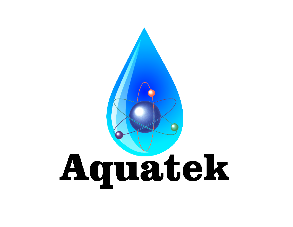Glossary of water terminology and definitions-m
Macroporous Resin
Ion
exchange resins produced in both cation and anion versions with 12
percent or higher cross-linkage. They offer a higher resistance to
oxidation and organic fouling.
Magnesium
One
of the elements making up the earth's crust, the compounds of which
when dissolved in water make the water hard. The presence of magnesium
in water is a factor contributing to the formation of scale and
insoluble soap curds.
Manganese (Mn)
A
element sometimes found dissolved in ground water, usually with
dissolved iron but in lower concentrations. It causes black stains in
laundry and plumbing fixtures at concentrations higher than 0.05 mg/l.
It is removed the same way as iron, by ion-exchange or oxidation and
filtration.
Manganese
is very similar to iron in its properties. In fact, they both often
occur together with manganese composing a small part of the combination.
Manganese can occur in a clear water state, latter turning to a colored
water state. It can come from the well already oxidized due to
dissolved oxygen in the water. There are also manganese bacteria which
are similar to iron bacteria. . Manganese staining does often appear to
be darker than iron staining (sometimes black)
The
distinction between iron and manganese is usually not that important
because most methods which successfully treat iron will also treat
manganese. However, when a larger amount of manganese is present,
modifications and additions to iron removal equipment may become
necessary.
Manganese Greensand
Greensand
which has been processed to incorporate in its pores and on its surface
the higher oxides of manganese. The product has a mild oxidizing power,
and is often used in the oxidation and precipitation of iron, manganese
and/or hydrogen sulfide, and their removal from water. It is
regenerated by the use of two to four ounces of a weak solution of
potassium permanganate per cubic foot of manganese greensand.
MCL
Maximum Contaminant Level. A drinking water standard. The maximum amount of a contaminant allowed in drinking water.
MCLG
Maximum
Contaminant Level Goal. The goal set for the maximum amount of a
contaminant to be allowed in drinking water. Has not been approved to
become the MCL.
Mechanical Filter
A
filter primarily designed for the removal of suspended solid particles,
as opposed to filters that remove contaminants by chemical means.
Microgram per Liter
Also known as parts per billion (ppb). The common symbol for microgram per liter is µg/l.
Microhm
One
millionth of an ohm. A unit of measurement used to test the electrical
resistance of water to determine its purity. The purer the water, the
greater its resistance to conducting an electrical current. Water of
absolute purity has a resistance of eighteen million ohms across one
centimeter at a temperature of twenty-five degrees Celsius.
Micromho
One
millionth of a mho. Used to measure the conductivity and the
approximate TDS content of water. Absolute pure water has a conductivity
of 0.055 micromhos per centimeter at 25 degrees Celsius. Also known as
micro Siemens. The specific conductance is the reciprocal of resistance,
therefore MHO is OHM spelled backwards.
Micron
A
linear measure equal to one millionth of a meter, or .00003937 inch.
The symbol for the micron is the Greek letter "µ". The smallest particle
visible to the human eye is 40 microns. Most types of bacteria range
from 0.05 to 10.0 microns in size.
Micron Rating
The
term applied to a filter or filter medium to indicate the particle size
above which all suspended solids will be removed, throughout the rated
capacity. As used in industry standards, this is an "absolute", not
"nominal" rating.
Milligram per Liter
(mg/l)
A unit concentration of matter used in reporting the results of water
and wastewater analyses. In dilute water solutions, it is practically
equal to the part per million, but varies from the ppm in concentrated
solutions such as brine. As most analyses are performed on measured
volumes of water, the mg/l is a more accurate expression of the
concentration, and is the preferred unit of measure.
Mineral
A
term applied to inorganic substances, such as rocks and similar matter
found in the earth's strata, as opposed to organic substances such as
plant and animal matter. Minerals normally have definite chemical
composition and crystal structure. The term is also applied to matter
derived from minerals, such as the inorganic ions found in water. The
term has been incorrectly applied to ion exchangers, even though most of
the modern materials are organic ion exchange resins.
Molecule
The
simplest combination of atoms that will form a specific chemical
compound; the smallest particle of a substance which will still retain
the essential composition and properties of that substance, and which
can be broken down only into atoms and simpler substances.
